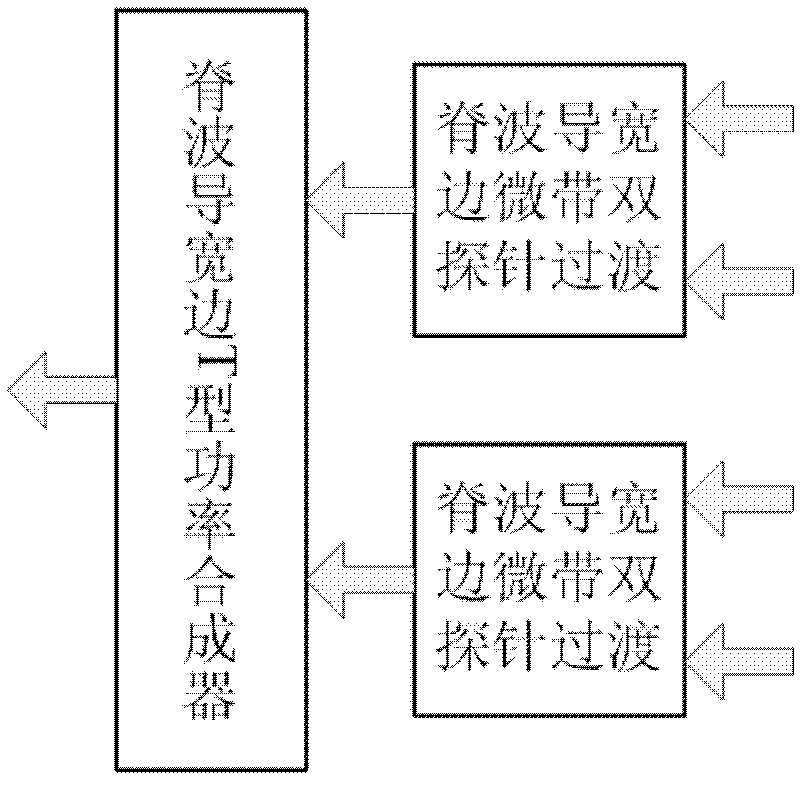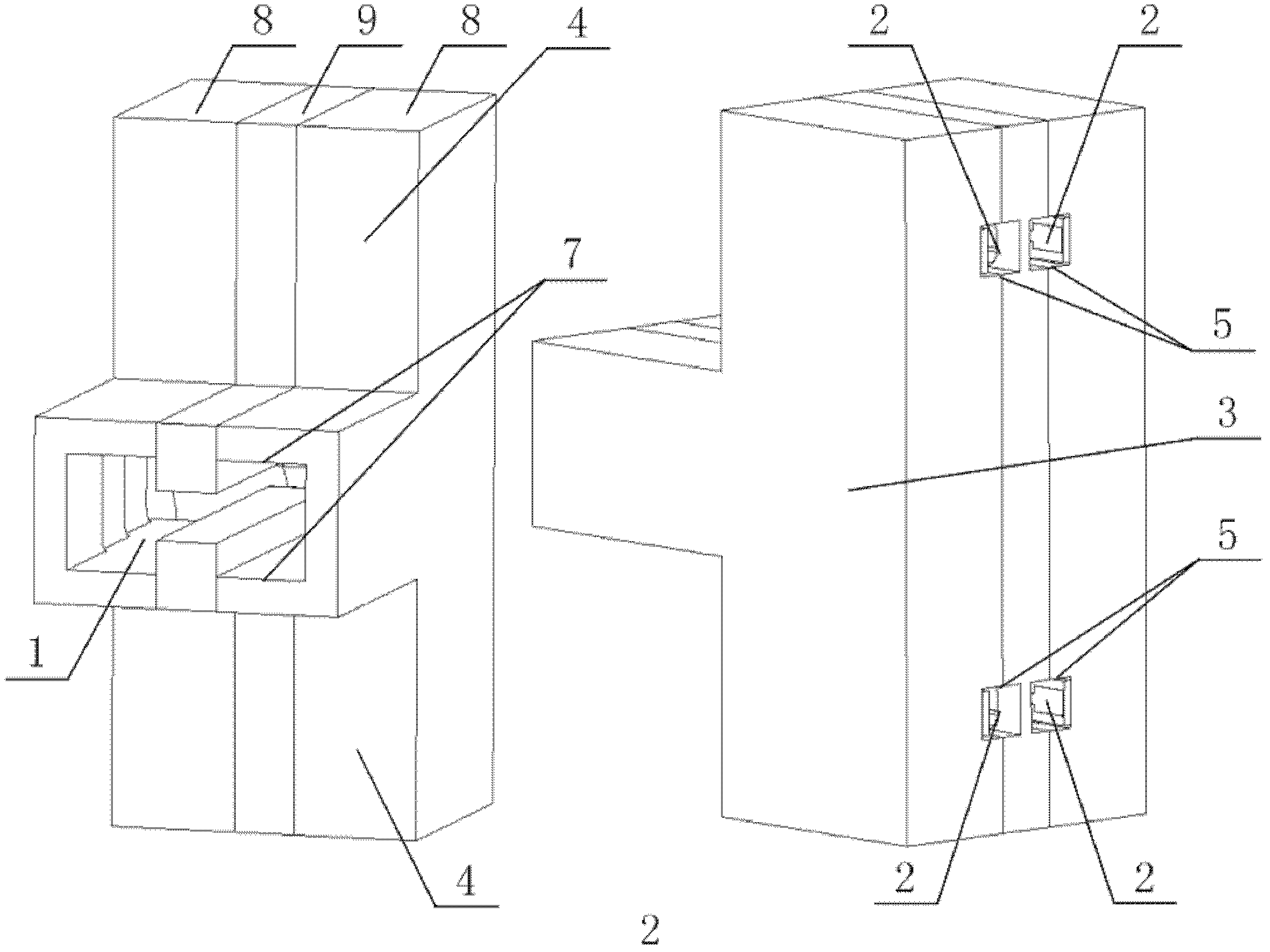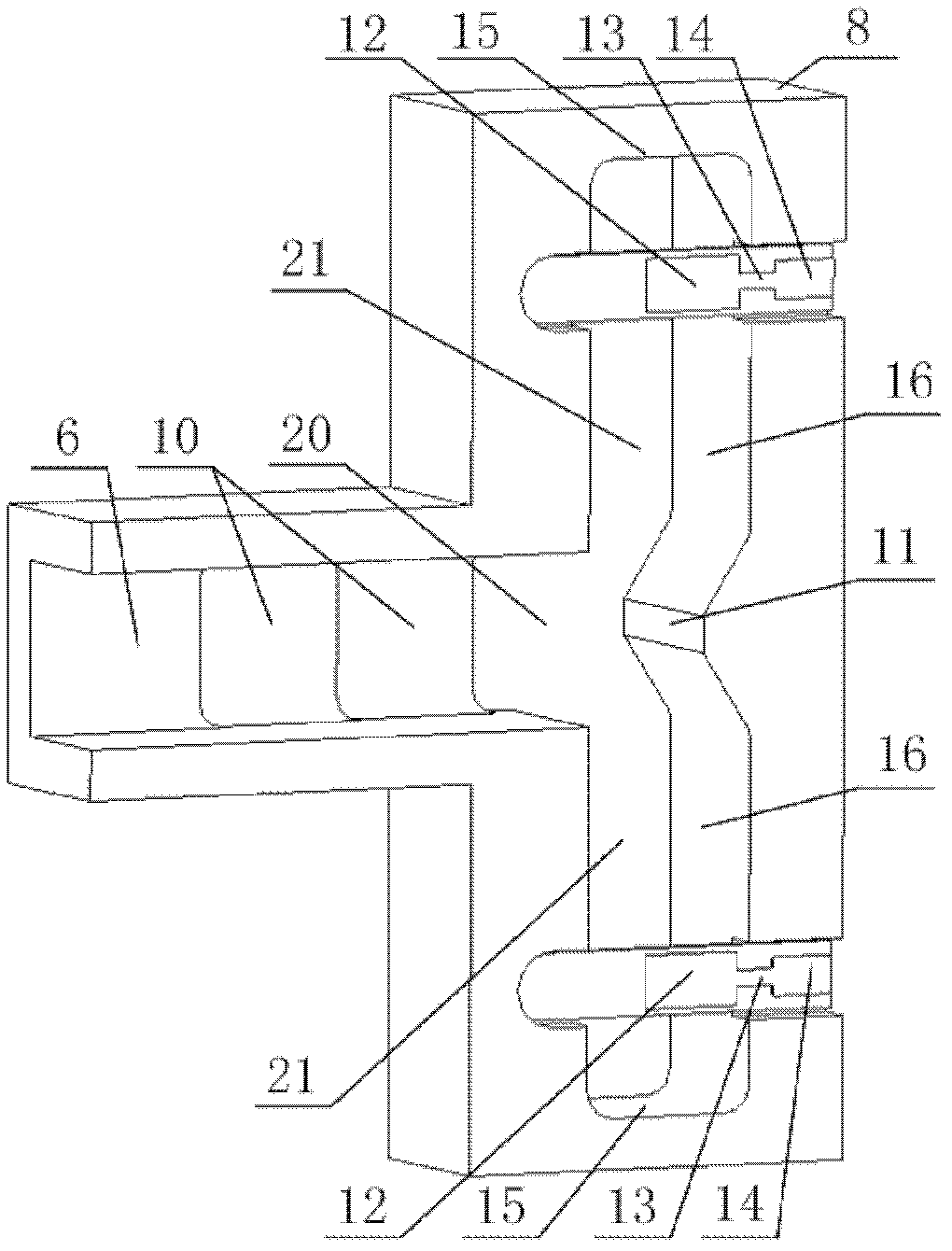Millimeter wave ultra-wideband spatial power combining network
An ultra-broadband, millimeter wave technology, applied in waveguide devices, electrical components, connecting devices, etc., can solve the problem of millimeter wave frequency band taking into account broadband and high synthesis efficiency, unable to cover the frequency range of 18GHz-40GHz, rectangular waveguide main mode Limited working bandwidth and other issues, to achieve the effects of small loss, smooth frequency response, and good integration and installability
- Summary
- Abstract
- Description
- Claims
- Application Information
AI Technical Summary
Problems solved by technology
Method used
Image
Examples
Embodiment Construction
[0019] The present invention will be further described below in conjunction with drawings and embodiments.
[0020] figure 1 The described power combining network based on ridge waveguide includes two parts: ridge waveguide broadside T-shaped power combiner and ridge waveguide broadside microstrip double-probe transition. The ridge waveguide wideside T-shaped power combiner adopts T-shaped connector 3 to synthesize the radio frequency signal from the upper and lower non-standard single-ridge waveguides 21 to the standard double-ridge waveguide output port 1; The double probes 12 are symmetrically inserted from the wide side 16 of the single-ridge waveguide 21 of the non-standard single-ridge waveguide 21 to both sides of the single-ridge back 19 of the waveguide, and the radio frequency signal is transferred from the microstrip double-probe 12 to the standard single-ridge waveguide 21. At the same time, two-way power synthesis is realized.
[0021] The single ridge waveguide...
PUM
 Login to View More
Login to View More Abstract
Description
Claims
Application Information
 Login to View More
Login to View More - R&D
- Intellectual Property
- Life Sciences
- Materials
- Tech Scout
- Unparalleled Data Quality
- Higher Quality Content
- 60% Fewer Hallucinations
Browse by: Latest US Patents, China's latest patents, Technical Efficacy Thesaurus, Application Domain, Technology Topic, Popular Technical Reports.
© 2025 PatSnap. All rights reserved.Legal|Privacy policy|Modern Slavery Act Transparency Statement|Sitemap|About US| Contact US: help@patsnap.com



